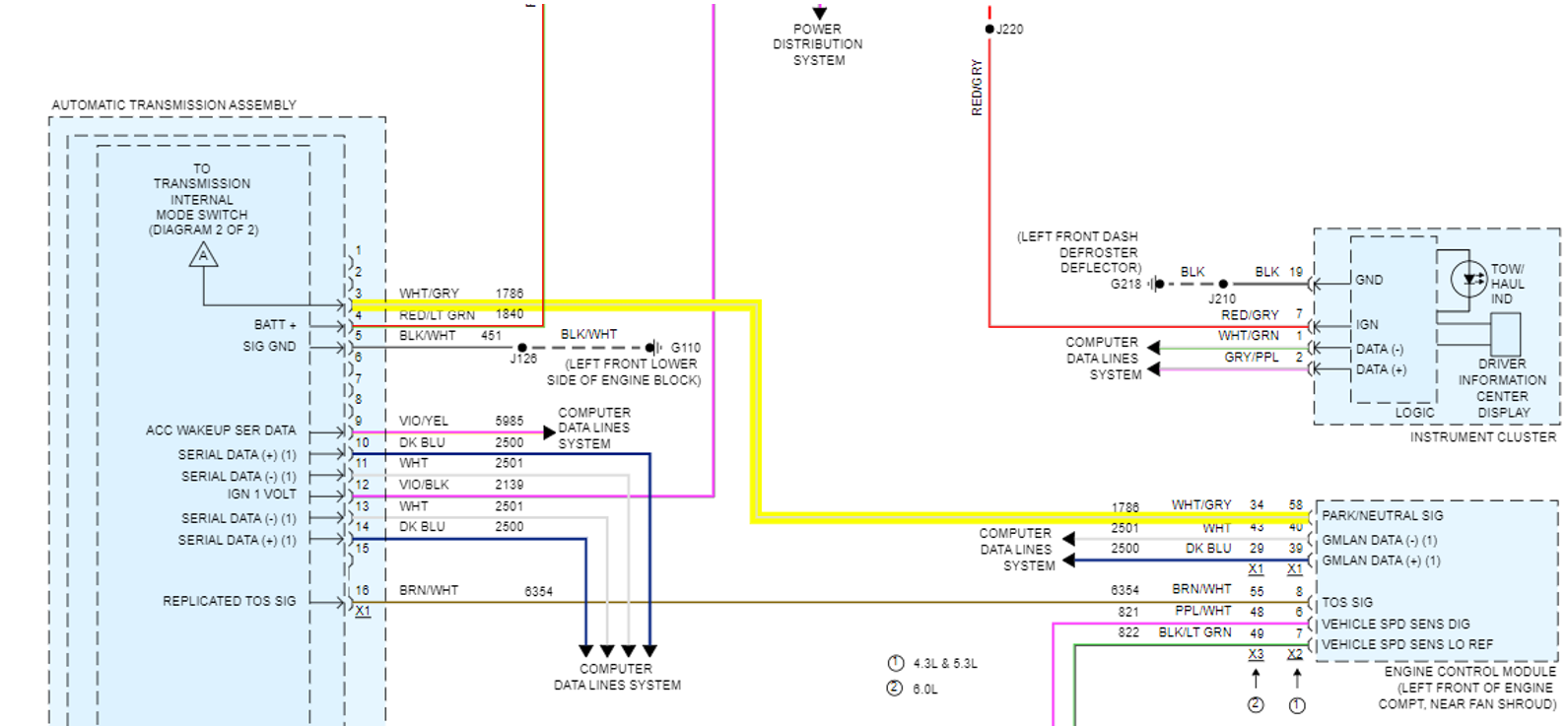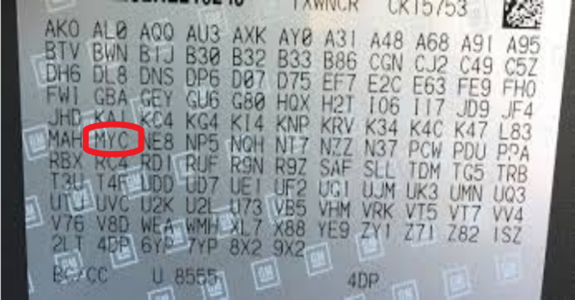When GM and Ford collaborated on the design and construction of this series of transmissions, they decided to put the TCM inside the transmission and incorporate it into the solenoid body. For GM this became what is called the transmission electro-hydraulic control module (TEHCM) and was used for the life span of the 6L transmission. Ford used the same design and called it Mechatronic, however they only stuck to this design till 2010/2011 depending on which model/engine combination we are discussing. After the change they removed the TCM from the solenoid assembly and placed it in the more traditional ford location in the PCM. For this article we will focus on the internal TCM location only.
Having an internal TCM on a remanufactured transmission makes installation unique because the TCM is unprogrammed when it is shipped. It is missing vehicle specific calibrations necessary to communicate with other vehicle modules when connected to the bus network. I know what you’re thinking, why not program the TEHCM based on the VIN provided when ordering. We would love to be able to provide that service, unfortunately there are copyrights that would be violated. Others have tried this method and GM took legal action, so to avoid this we are forced to play by their rules.
In order to properly install this unit, the TEHCM must be programmed before the vehicle is started. Because of the way the wiring is laid out it is possible to start the vehicle even if the TEHCM is not programmed. See the GM wiring diagram in Fig. 1, the IMS (Internal Mode Switch) sends a Park/Neutral start signal to the PCM bypassing the TEHCM and allowing the vehicle to start.

Figure 1
Why is this important?
If you start this vehicle without the TEHCM being programmed it is not able to control the transmission, including the pump pressure/volume the pump is producing. The pump will produce the maximum volume it can for the given engine RPM. One of the pieces Ford and GM differ on their designs is the pump. Ford uses a gear style pump in the 6R60/80 that is less susceptible to damage, while GM stuck to a vane style pump that was used in the 4L60. The vane style pump doesn’t survive long when it is producing the pressures seen without controlling the pressure control solenoid in the TEHCM.
We have witnessed this firsthand in shops we are involved with locally as well as shops calling into the Tech department. The complaint is almost the same in all cases, it usually goes “the transmission doesn’t move forward or backward”, “I have no line pressure”. My response “okay walk me through the install process”. “well, I had no issues mounting the transmission and everything was going fine” I added 5 qts to the pan and started the vehicle”, finished topping off the fluid and parked it outside to wait for the mobile programmer to come by or the flatbed to pick it up to bring it to the dealer”. “Now it won’t move! Well I hate to say this, but you likely broke the pump gear due to the excessive/uncontrollable line pressure.
In the case above we will autopsy that transmission when it comes back, and it always backs our diagnosis.
Case Study.
Recently we had a shop install a 6L80 and start the engine to complete the fill process. This shop had done it this way for years and never had an issue, but in this case it produced a noise like tin cans in clothes dryer. They called us and said the transmission is no good. As we always do, we asked them to walk us through the installation process and we realized it had not been programmed. They mentioned the vehicle was able to move forward and reverse on the lift, and the noise would get quiet for a brief moment in between shifting ranges. We were optimistic that we caught it before permanent damage, so we asked them to program the transmission just to see if that was going to fix it. Two or Three days later we got a call saying the transmission was working great without noise and had been for a for a couple hundred miles. Without pressure gauge readings to back this our suspicion is the noise was coming from either the PR valve or pump slide rapidly bouncing. At the time of this writing, it has been two months without a word from the customer, the programming fixed it. Just because you have done a process differently than required from the manufacturer 50 times without issue, doesn’t mean it was done correctly, it just means you got lucky. When you have an issue you need to take a step backward and follow the service procedure, and retest.
Programming Options.
- The dealer will program the vehicle to the latest calibration available, however, you will need to install the transmission, and tow it to the dealer without starting the engine. The challenge becomes how to get the vehicle on the tow truck and once the dealer has done the program the transmission needs to be filled. Do you pay the dealer to fill the unit or tow the vehicle back to your shop for you to fill it? That comes down to which is less expensive and ultimately your decision.
- Mobile programmers are a great alternative, because they come to your shop with all the equipment and program the vehicle at your location, saving you from the costly tow. The downside is they are not in every location and that service may not be available to you. I recommend a google search and if there is no one listed try the mobile key companies, sometimes they offer that service, or can point you to someone that may.
- There are some companies out there that offer remote programming equipment. They will send you the tools needed so you can plug into the vehicle and allow the vehicle to be programmed from their remote technician. This is great because you are able to do the job without the investment of the tool and subscriptions needed for each manufacturer. All that they require is a deposit for the equipment, the cost of the shipping to and from you, and the programming fee they charge. If this interests you, here is a list of companies offering this service currently.
- https://www.transtar1.com/rap-info
- https://elitekauto.com/
- There are a number of shops out there that have dove in the word of programming and have the equipment and subscriptions needed to program the vehicle. If that is you then you are likely already programming vehicles and possibly offering that service to other shops in the area.
Summary.
Regardless of which of the four options you choose, we would like to mention Technicians even at the dealer level have struggled to program the TEHCM correctly. The common message they receive is “failed during programming”, or “TUN/PUN is needed”. The TEHCM is not at fault in this case. What has happened is during the setup process the correct RPO code was not entered. You may be asked to enter the engine and transmission RPO codes to identify what the vehicle was built with. If the engine RPO code is wrong you may be locked into what was available with that engine, and the 6-speed may not be an option. If the programming defaults to an 8-speed transmission, then you will be asked to provide this a TUN/PUN, and you will not be able to proceed. Do not guess the RPO codes, find the sticker that looks like fig 2., located in the following possible locations:
- Inside the glovebox
- Inside the trunk lid
- Under the hood
- In the back seat bottom cushion

Figure 2
We felt it was necessary to mention this because we had two GM dealer technicians recently called in, and in both cases, it was misidentified, and easily resolved. The technicians were mis-lead by a change in the menu pages during a recent GM software update to the factory programming tool.